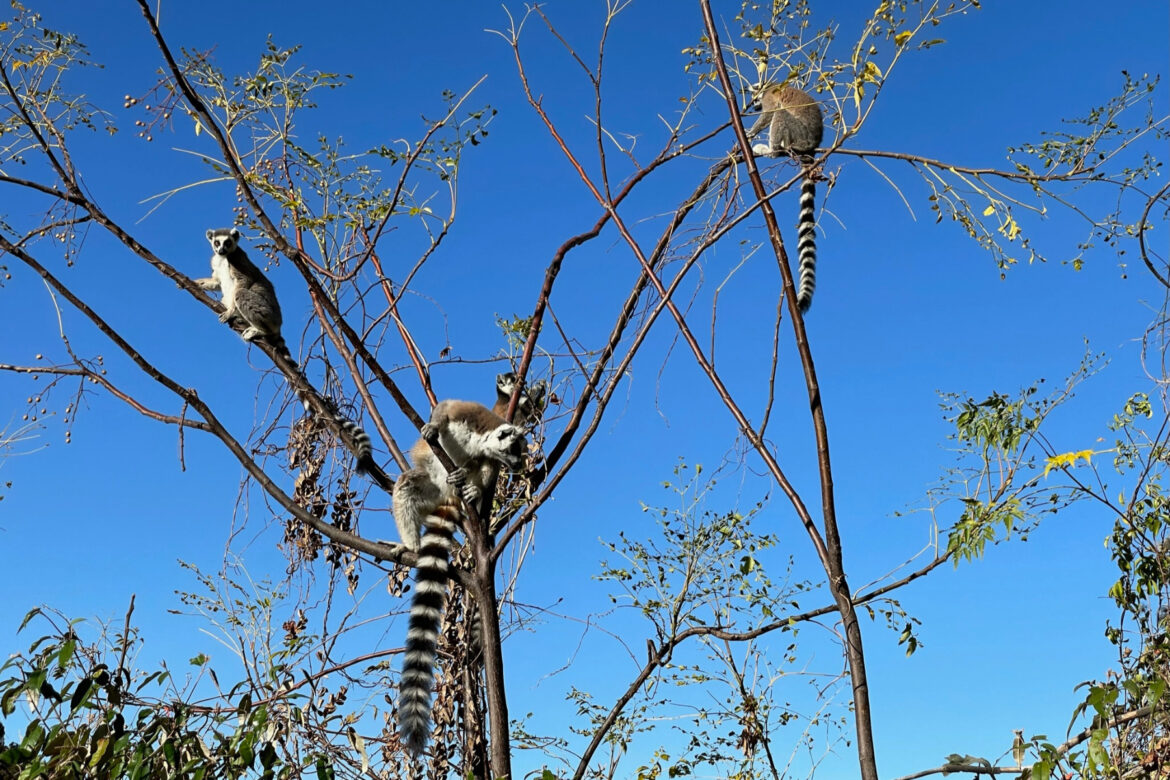A 14-day trip to Madagascar is not nearly enough to cover even a fraction of the country. But it’s enough to get one hell of an experience. This article serves as a travel guide for Madagascar when you only have two weeks to discover its wonders. It takes you from the capital to the west, continues up to the central highland, and ends with the best of the east. The schedule is tight, and it’s guaranteed you won’t be bored.
Why follow this travel guide? Because it’ll take you to three different climates, show you several of Madagascar’s top places, give you awesome views of unique wildlife, and let you relax in a tropical paradise for a few days. What’s not to love?
Day 1: Travel Day
Today you take your international flight and arrive in the capital of Madagascar, Antananarivo. Antananarivo – or Tana for short – has a few interesting sites, an abundance of markets, and quite a few good restaurants. In this itinerary, you won’t spend much time here, so don’t get too comfortable. Tomorrow you fly out from Tana to Morondava, so depending on your flight schedule, you might have time to browse a bit.
Tana is the most populated part of the country, with all the troubles that come with it. It’s not necessarily unsafe, but petty thefts are quite common.
Read my article Is Madagascar Safe for Tourists? for good advice on how to stay safe.
Day 2: Antananarivo —> Morondava
Heading towards Morondava is the plan for today. Morondava is located in the west of the country. To save time, take a national flight from Ivato Airport in Tana. The flight is about an hour and a half, and when you land there, make sure to wear your summer clothes. It gets sizzling hot during the day!
Already from the airport, you will notice the change in the climate. The luscious highlands around Tana is replaced with a dry climate. The green tropical plants are converted to succulents, and the air is both cleaner and dustier.
The town of Morondava is tiny compared to Tana, yet it’s the main town in the area. And very different from the capital. No tall buildings, less traffic, and only a few stores on the main street.
When you’ve checked in to your hotel, you have the entire afternoon and evening to explore the town. The markets are interesting, the people are friendly, and the nightlife is safe. Enjoy!
Day 3: Morondava —> Kirindi Private Reserve
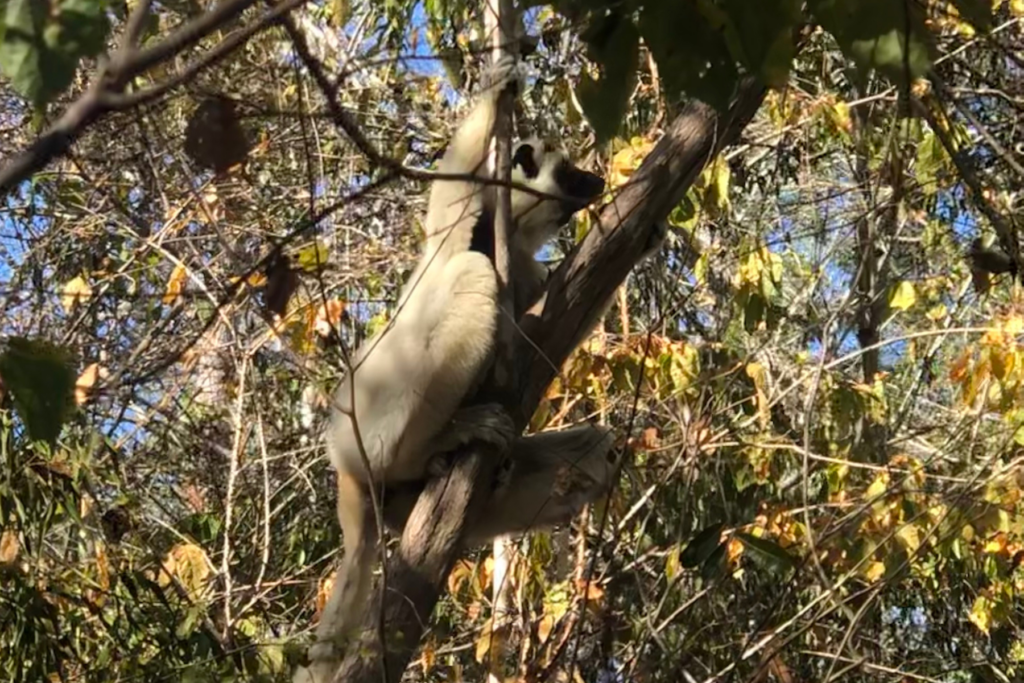
Just a few hours of driving north of Morondava is the Kirindi Private Reserve. The park is a dry forest, which makes it very different from the rainforests you’ll discover later this week. Kirindi is known to be the best place to spot the Fossa, but I wouldn’t get my hopes up on that – the Fossa is rare and hard to spot. Instead, you’re almost guaranteed to spot a variety of lemurs.
Kirindi is home to many different species of lemur. You’re likely to see both the Brown lemurs, the Sifakas, and several smaller kinds. Furthermore, thousands of insects and interesting plants will enlighten your mind when you visit.
When you’ve checked in to your hotel, you might have a few days to relax before going on a night walk. In Kirindi there are no slippery slopes, so the night walk is inside the forest. Bring a flashlight, wear long pants, and you’re in for a treat.
Day 4: Kirindi Private Reserve —> Morondava: Sunset at Baobab Avenue
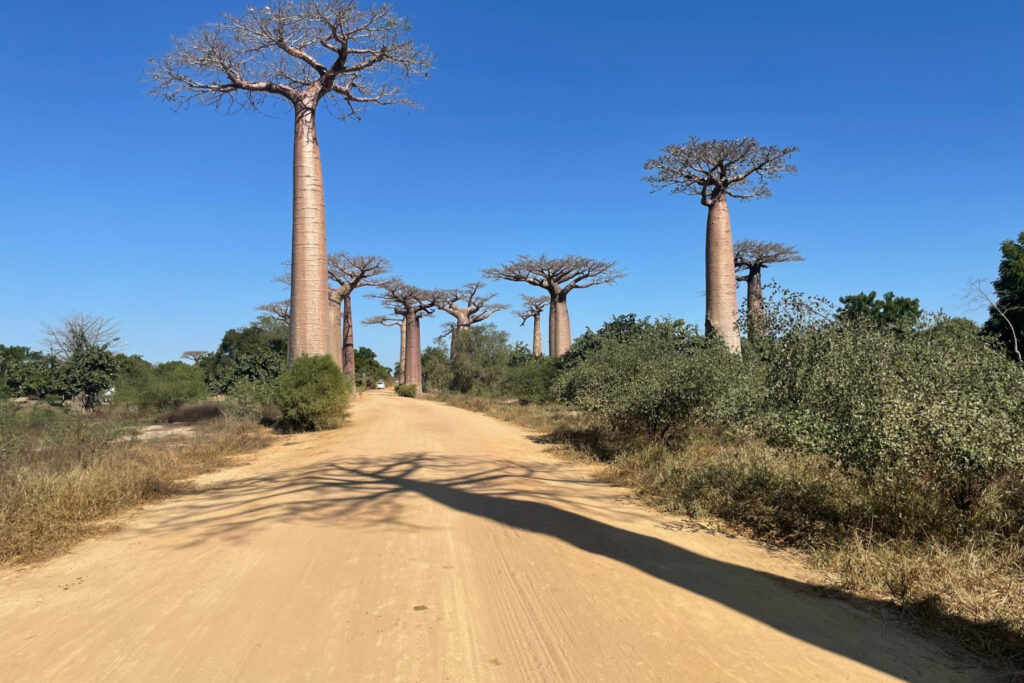
Today you start the day by checking out of your lodge. Then going for a hike in Kirindi Forest. Be prepared to be amazed. The hike will take a few hours, during which you’ll spot a variety of interesting flora and fauna. The forest is absolutely beautiful.
After the walk, you drive back to Morondava just in time to see the sunset at Baobab Avenue. Baobab Avenue is by far one of the most beautiful sights of Madagascar. The enormous trees are plentiful in the area. Since the climate is dry, the scarcity of other flora makes them stand out on the horizon. Furthermore, the dry weather makes for the most beautiful sunsets. There’s rarely a cloud in the sky to disturb the view.
On the way to the viewpoint, you might have time to stop at the Lovers Baobab. The tree consists of two baobabs swirled together and united as one. It’s known to cure a broken heart and is sacred to the Malagasy people. So, if you’ve got trouble on the home front, it might be worth a visit. Just saying.
When you’ve enjoyed the sunset with a beverage of your choice, you check in to a hotel in which you’ll be staying until the morning.
Day 5: Morondava —>Miandrivazo
Today you’re heading toward Miandrivazo. Miandrivazo is a town in the highlands on the way to Antsirabe. While the primary purpose of your stop here is to cut the journey to Antsirabe short, it’s also a great cultural experience.
Miandrivazo is located by the Tsiribihina River, which runs from the highlands to the west. The river is the center of life in the towns around it, so the culture and way of life you’ll experience here are different from others on your trip.
The drive from Morondava is long, but upon arriving in the afternoon, you have time to discover Miandrivazo. Have lunch by the river while observing the vibrant life around it, or visit the center of the town.
Spend the evening relaxing, before you get back in the car tomorrow.
Day 6: Miandrivazo —> Antsirabe
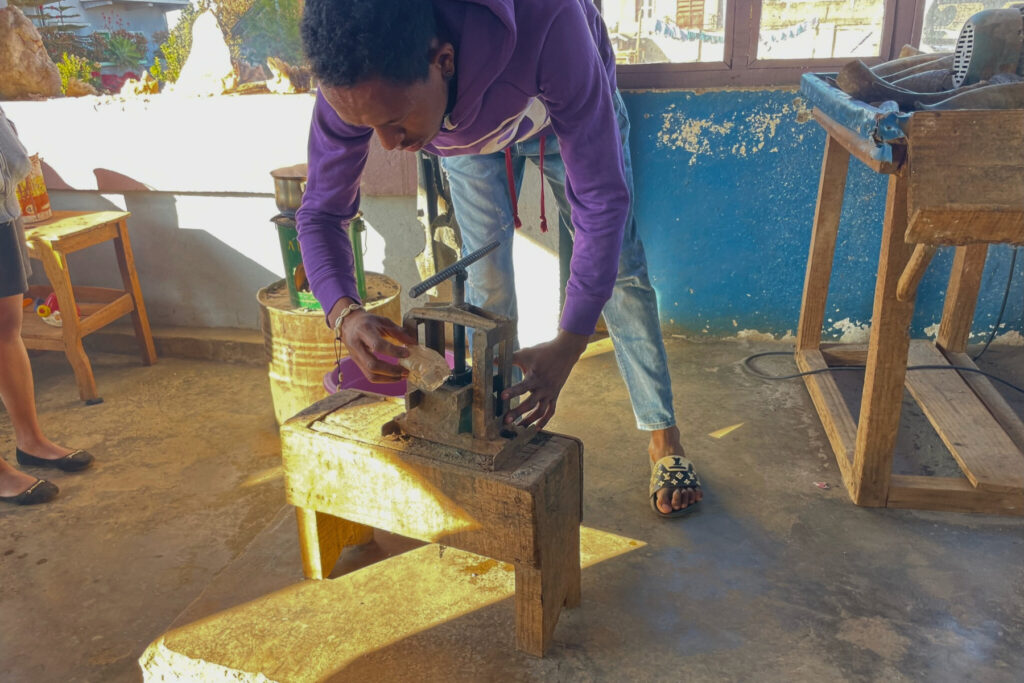
The drive to Antsirabe is rather long, but don’t worry. It’s stunning. You drive through a mountain landscape with swirly pathways, cliff walls, and remarkable scenery. The hours are not wasted, but rather well spent.
When you arrive on the outskirts of Antsirabe, you’ll be amazed by the landscape. The city is a farming capital, but since it’s a mountain area, the fields are built on plateaus down the mountainsides. It looks incredible.
Antsirabe itself is the best place to indulge in Malagasy crafts. Several museums and factories open their doors to visitors, enabling you to see the process. You will be amazed by how much they can make with so little. The Zebu horn factory and a small production of toys made from recycled cans are undoubtedly recommendable, but there are many others, so feel free to have your choice. You have the afternoon and tomorrow morning to make the most of it.
Day 7: Antsirabe —> Andasibe & Breeding Facility on the Way
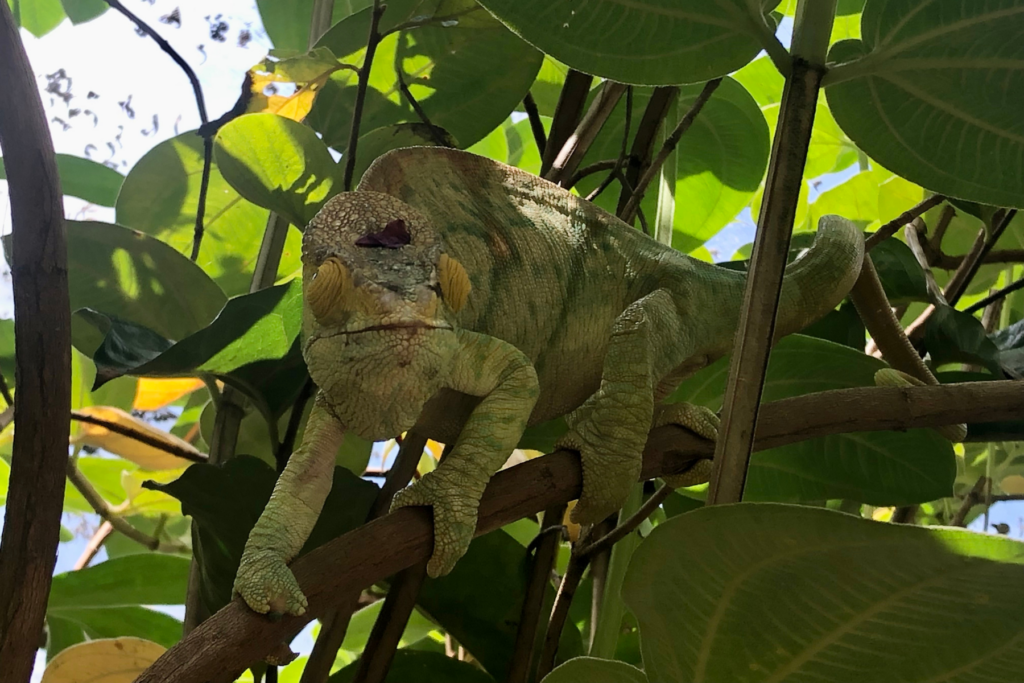
After spending the morning exploring crafts in Antsirabe, it’s time to hit the road again. This time to Andasibe. Andasibe is the most popular National Park in Madagascar and for good reason. The park is very generous with its wildlife, so there’s a good chance you get to see everything you’re hoping for.
On the way to Andasibe, visit the Mitsinjo breeding facility. Mitsinjo breeds endemic and endangered species and releases them into the wild. Apart from supporting the initiative, it’s also a great opportunity to see several species up close. Chameleons are especially wonderful in this place, but you can see tenrecs, lizards, geckos, moths, snakes, and frogs as well. It’s a learning experience worth exploring, and it’s right on your way.
After Mitsinjo, you head to your lodge in Andasibe just in time for a night walk by the road. Frogs and Chameleons are especially easy to view at night, but you might be lucky enough to spot the yellow eyes of the Mouse Lemur as well.
After your night walk it’s time to have dinner to the vivid sounds of the rainforest. An experience in itself. If you are sensitive to noise, you should bring earplugs. The rainforest is loud and alive throughout the day.
Day 8: Andasibe —> Pangalanes —> Palmarium
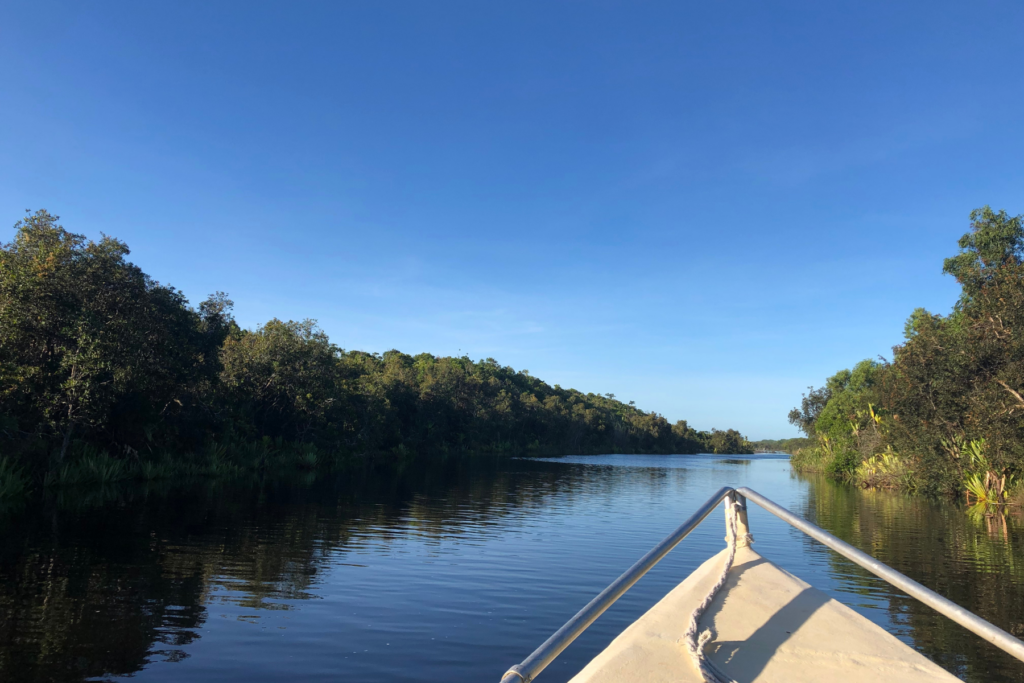
After breakfast is time to visit Andasibe National Park in daylight. And you’re in for a treat! The rainforest is positively beautiful, and the animal life on all levels is radiant. You’re likely to experience Brown Lemurs, Sifakas, and Varis. If you’re fortunate, you might even get to hear the Vari call up close.
The flora in the park is very like the classic rainforest with lianes, water reserves, and lots and lots of green. Plus a few thousand endemic species. Crazy, right? The forest is wet, so the trail can be tough. Wear good shoes, and bring a raincoat as the weather can get wet in a matter of seconds.
When you’re done with your hiking trail, it’s time to head further east. This time, all the way to the Pangalane channels by the coast. The drive is a few hours to Manambato, where you’ll be picked up in a boat and sailed to the Palmarium reserve.
The Palmarium is a private reserve and lodge that lets you get close to the lemurs in an ethical manner. To get there, you must sail about half an hour from Manambato. The park is only accessible by boat. When you get there, you check in to your lodge and go straight on a night tour to Aye Aye Island. Aye Aye Island is the best place to view the night active Aye Aye. Here you can view them at a relatively close distance.
Afterward, enjoy the food at the excellent restaurant. Tomorrow you get to explore the park in daylight.
Day 9: Palmarium—> Mahambo & Lunchstop in Toamasina

Today you get to experience close encounters with the lemurs in the park. Palmarium Reserve is famous for allowing you to feed the animals with close monitoring and respect for the animals. While the ethics in viewing animals this way can be discussed, Palmarium believes that the best way to inspire people to support endangered animals is to create an opportunity for people to relate to them. And they do it in a very respectful manner. Apart from responding to a feeding call, the animals live completely natural lives. If you’re not a supporter, you can simply view the animals without contributing to the feeding.
When you’ve seen the park and learned about its conservation initiatives, you get in the boat and sail through the Pangalanes until you reach Manambato again. The Pangalanes is a long river connecting several lakes and were made by human hands to ease transporting goods from north to south of the country. They’re still used for that purpose but are also the center of fishing communities, and offer terrific scenery by boat.
When you get to Manambato, you have a long drive to Mahambo ahead of you. Mahambo is where you take the ferry to the tropical paradise Sainte Marie tomorrow, but until then offers a cozy town where you can explore the local culture.
On your way to Mahambo, you make a lunch stop in Toamasina. Toamasina is the capital of the east and the 3rd largest city in Madagascar. Its primary function is trade because of its large harbor. While not an attractive location for a tourist, it provides a clear image of the trade infrastructure in Madagascar – and why it’s having a hard time functioning.
In Mahambo you have the evening to chill and get ready for relaxation.
Day 10: Mahambo —> Sainte Marie
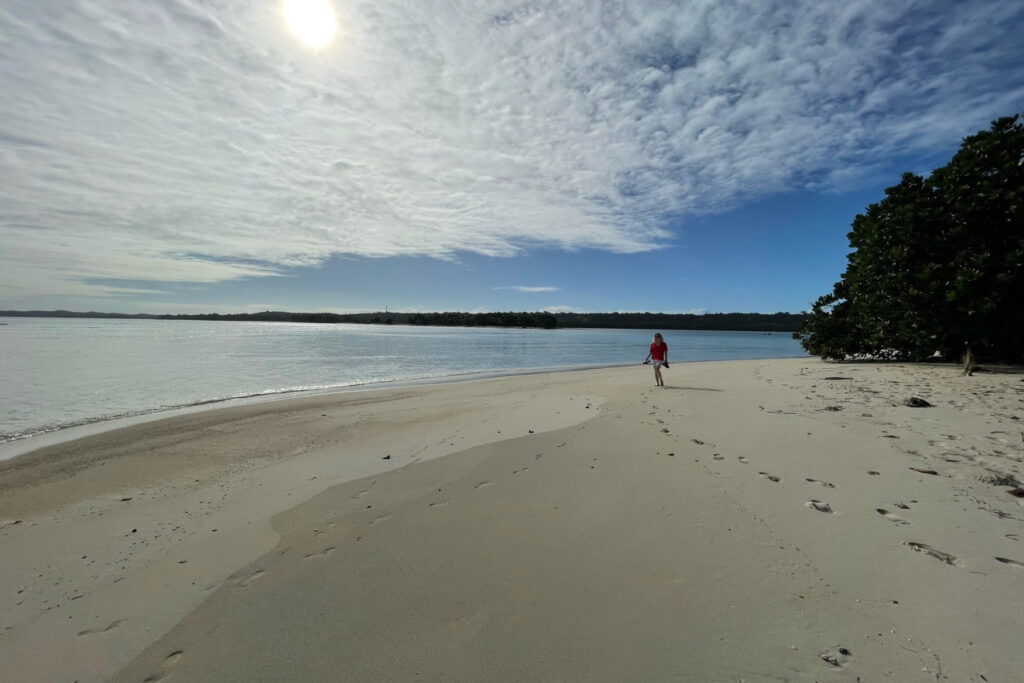
To get to Sainte Marie, you have two options. Either taking a national flight from Antananarivo or the ferry from Mahambo or Soanierana Ivongo. In this itinerary, the ferry is by far the best option. It’s cheaper, and it fits the route. Taking the ferry is an adventure in itself, as it’s the local choice of transportation.
You arrive on Il Sainte Marie after 3 hours of sailing in its main town Ambodifotatra. While the city is interesting, it doesn’t exactly scream paradise island. But hang on. You will soon be surrounded by stunning beaches and palm trees.
From Ambodifotatra you can take a Tuk-Tuk from the harbor to your hotel, or have your hotel arrange the transfer. If staying at Il aux Nattes, you’ll probably be picked up by boat from the harbor or the southern point of Il Sainte Marie. Be aware that the town center is home to 2 out of 3 of the ATMs on the island, so make sure to stop by one of them while you’re there.
Spend the day relaxing in your hotel, having a cocktail under the sun, and enjoying the change of scenery.
Day 11-13: Sainte Marie

You’re in paradise. Il Sainte Marie and Il aux Nattes are some of the most beautiful islands in the Indian Ocean, and you have three days to explore them. Three days are far from enough to indulge yourself in everything they can offer, so do not waste a minute. There are plenty of spectacular views, water sports, nature, restaurants, and bars. Furthermore, the islands were a known place for Pirates in the past, so several stories are dying to be told. And if you enjoy the local experience, visit the local villages. The population is just riveting, and it doesn’t get safer than here.
If you’re looking for inspiration, read these articles – they’re worth it!
What to Do in Sainte Marie
7 Places to Experience When Staying at Il Aux Nattes
Day 14: Travel Day
Today is a sorrowful day. You leave paradise and head back home. Luckily, you’re richer in experiences, memories, and impressions.
From Sainte Marie, you take a national flight from Tana, where you’ll catch your flight home. Depending on how your flight schedules fit, you might have an extra night to explore Tana. Enjoy!
This itinerary is tight. To make it work, you need two national flights and a car and driver. If you want to save that money, it’s possible to drive yourself or go by Taxi Brouse. If so, add some extra days. Madagascar’s infrastructure (or lack of same), makes it very difficult to stick to a schedule if not used to it.
And if not, contact an agency and let them make the adventure of your life run smoothly, so you can lay back and enjoy every second.
Are 14 days not enough? Check out The Ultimate Itinerary: Madagascar in 3 Weeks

